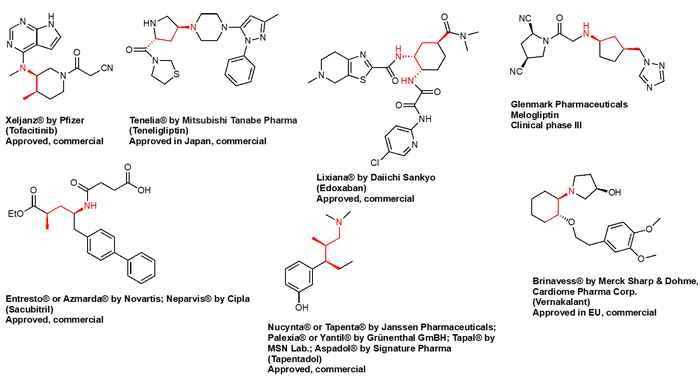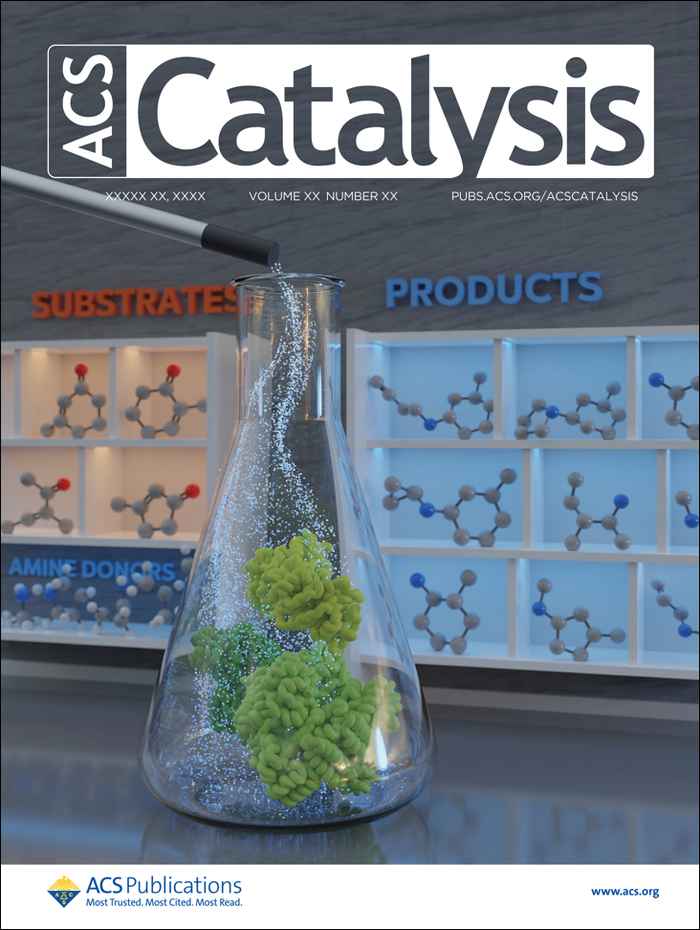Enzymatic synthesis of primary, secondary and tertiary amines containing two stereocenters
All possible stereoisomers accessed through one-pot biocatalytic cascade
15 November 2022

Chiral amines are important molecules in chemistry, notably for the synthesis of active pharmaceutical ingredients (APIs). At the Van ‘t Hoff Institute for Molecular Sciences, the Biocatalysis research group has since 2015 been exploring the use of enzymes for the atom-efficient, sustainable, and highly selective synthesis of chiral amines. Since these amines contain a stereogenic center, a main challenge in developing such biocatalytic conversion routes is to ensure that one of two possible enantiomers is produced in sufficiently high chemical purity and selectivity. Over the years, the group has reported some remarkable successes in this field, applying both naturally occurring and nature-derived (i.e., engineered) enzymes.
The research now published in ACS Catalysis represents a significant step forward, not only for the group’s portfolio but also for the field of biocatalytic conversion in general. It addresses the difficulty that many pharmaceuticals contain amines with two (or even more) stereogenic centers. The biocatalytic synthesis of such amines requires a superior stereochemical recognition so that the desired stereoisomer can be obtained out of four possible ones.
Access to all stereoisomers along with sustainable synthesis
By exploiting the ene-reductase/imine reductase cascade, in many cases all the four possible amine stereoisomers could be synthesized in excellent selectivity (i.e., one stereoisomer was obtained out of the possible four for a given reaction) and with a very high chemical purity (i.e., no other products were formed). In fact, in the reaction, the desired stereoisomer could be obtained in a chemical and optical purity exceeding 99.8% and the formation of possible side-products such as amino-alkenes was avoided. In general, the developed cascade strategy permits sustainable chemical synthesis by minimizing the number of reagents and the generated chemical waste. In fact, the only reagent used is ammonium or alkylammonium formate, serving as amino donor, as the source of reducing equivalents (i.e., the formate counter-anion) and as aqueous buffer salt. This was enabled by incorporating a novel NADP-dependent formate dehydrogenase (FDH) in the cascade reaction.

Future studies
Future research will focus on the engineering and discovery of more EReds and IReds possessing complementary stereo-selectivity, improved stability, and a broader substrate scope. Such research efforts will elevate the impact of biocatalytic retrosynthesis on the sustainable synthesis of chiral organic molecules possessing multiple stereogenic centers.
Publication details

Tanja Knaus, Maria L. Corrado and Francesco G. Mutti: One-Pot Biocatalytic Synthesis of Primary, Secondary, and Tertiary Amines with Two Stereocenters from α,β-Unsaturated Ketones Using Alkyl-Ammonium Formate. ACS Catalysis 2022, 12, 14459-14475
DOI: 10.1021/acscatal.2c03052